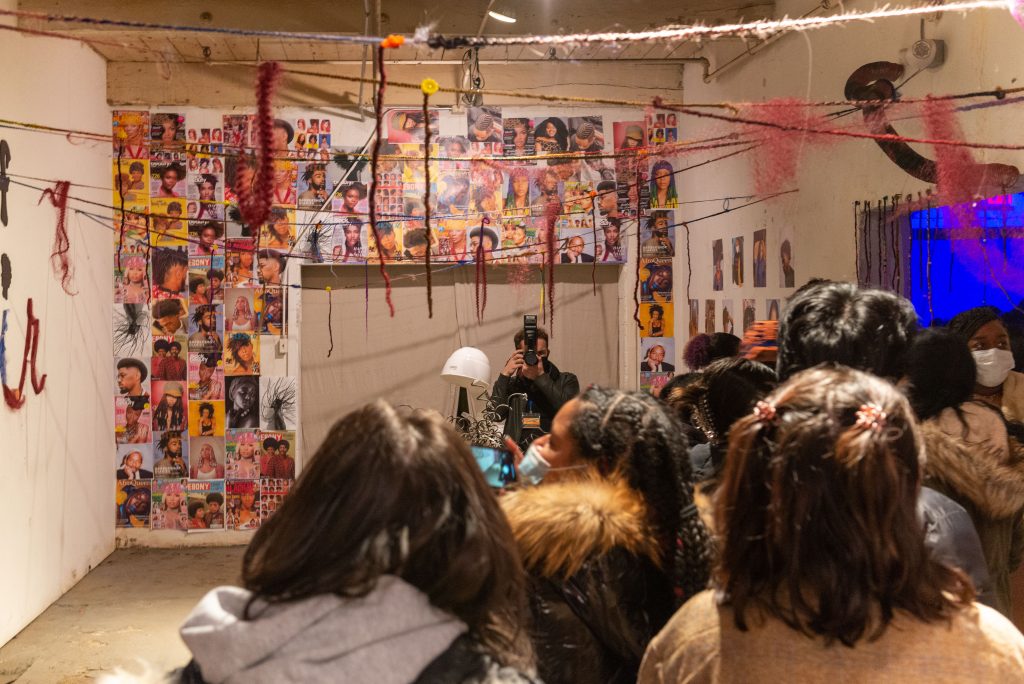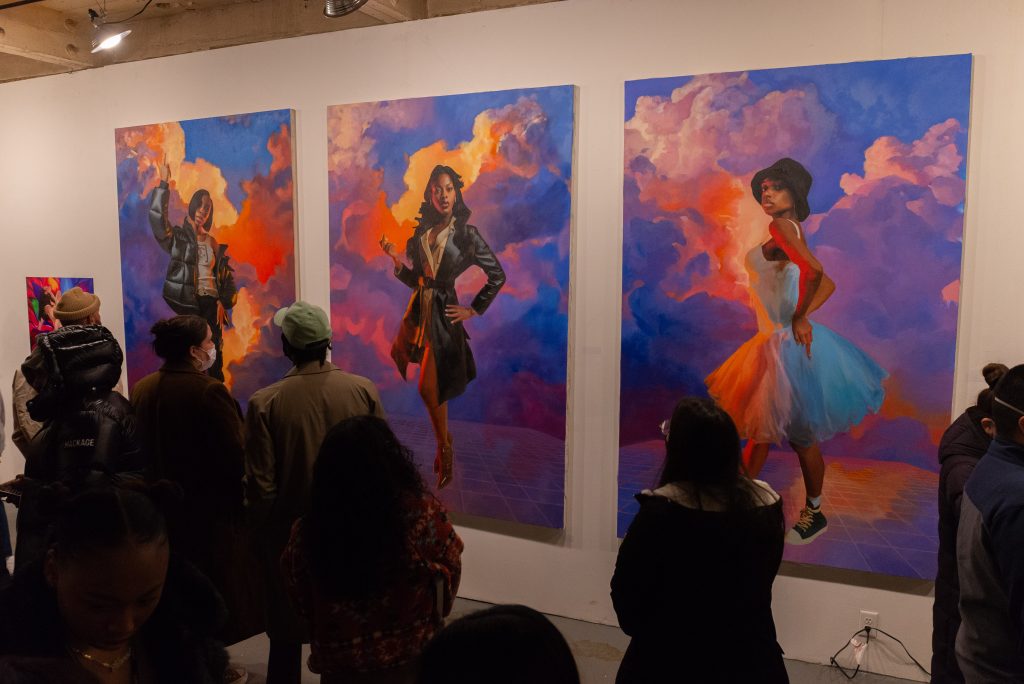
This past weekend, Black Museum opened its doors for two nights — Feb. 18 and Feb. 19 — at Spool Contemporary Art Space. The art gallery, located on 138 Baldwin St. in Johnson City, featured nine curators, nine exhibitions, four musical performers, a fashion show and over 100 Black local and student artists.
Black Museum was first conceived in 2019 by Binghamton University student Kendra Gourgue, a senior with an individualized major in intersectionality and art studies and a curatorial intern at the BU Art Museum, who sought to establish an art gallery for all Black artists within the Binghamton area. A year later in February 2020, the initiative came to fruition at the BU Art Museum and was supported by the Black Student Union (BSU). This time, Black Museum has returned through an off-campus site, boasting a main exhibition, gardening exhibition, projection film exhibition, hair salon exhibition, music and DJ exhibition and propaganda and research exhibition. A range of local businesses, including Riot Act Books, tabled outside of the main gallery.
Gourgue discussed the motivation behind the gallery.
“I originally created the Black Museum as I realized there was a lack of space for Black artists at [BU] to congregate and have their work praised as valid, beautiful and important,” Gourgue wrote in an email.
Black Museum entailed an intensive planning process. Gourgue detailed the tasks that were done behind the scenes, including managing the Black Museum Instagram, putting up flyers, sourcing artists, advertising the event and overseeing a team. She credited this team — called “Black Museum HQ” — with aiding the administrative process and the sourcing of over 100 artists together, who were included in the planned exhibitions.
“[The] team involved Elizabeth Plantin and Josef Thompson,” Gourgue wrote. “Following this, I reached out to Black folks who I believed had immense curatorial abilities: Osariemen Aiyevbomwan and Micah Jumpp of the ‘Knowledge Creation Exhibit;’ Ajahee Sekkm-Miles and Jabari Browne of the ‘Soul Symphony Exhibit;’ Krystal Honeyghan of ‘The Hair Salon Exhibit;’ Josef Thompson of ‘The DJ Booth Exhibit;’ Jenna Johnson, Krista Hall and Ajahee Sekkm-Miles of the ‘Concrete Jungle Exhibit;’ Nikita McKenzie of the ‘Afrophoria Exhibit’ and Elizabeth Plantin of ‘The Red Polaroid Exhibit.’ I was the curator and adviser of the entire museum, as well as a curator in the main room, ‘The Hair Salon’ [and] ‘Concrete Jungle.’ I offered all of these curators base ideas that I had for the [exhibition], and they expanded the vision incredibly after that.”
Gourgue credited the work of Keneal Campbell, who was also a part of the Black Museum HQ team. Though Gourgue said the responsibilities and curation of the museum weren’t without its challenges, they highlighted the importance of the process of bringing the vision to life as a collective.
“Without [the curators’] work, and the work of all who chose to have their art portrayed in The Black Museum — the experience never would have reflected the beauty of Black community, creativity and love,” Gourgue wrote. “This is what The Black Museum is about. It’s meant to be created, experienced and enjoyed as a collective Black experience. It’s meant to affirm that absolutely all they create is beautiful art: from research, to hair braiding, to tending to plants and so so much more.”
Black Museum saw significant turnout and performances were met with enthusiasm and applause. Josef Thompson, co-curator for Black Museum, a junior majoring in systems science and industrial engineering and secretary for BSU, described the most impactful aspect of the night.
“The most memorable part of the event was definitely seeing everyone mingling and taking pictures throughout the museum,” Thompson wrote in an email. “I loved seeing the smiles on everyone’s faces as they viewed the art and [exhibitions].”
On Instagram, the Black Museum account describes the tenets of the event as “[highlighting] and [centering] the work of all Black artists, honoring everything that Black people do as a form of art.” Gourgue elaborated on the meaning of the phrase “our art is everything,” which was a theme of the gallery.
“‘Our art is everything’ is a call to Black folks of all intersections, to acknowledge that everything and anything we create is art, and to understand that Black art has both created and changed so much in our world,” Gourgue wrote.
Looking to the future, Gourgue hopes that Black Museum influences patrons to leave with greater vigor to support all Black creatives in their endeavors and to place immense importance on the beauty of our pursuits. Thompson also expressed the value of Black Museum from a co-curator’s perspective, especially as a space for Black students and creatives.
“This event was really just a space for Black students to de-stress and forget about any outside pressures, whether those be societal pressures, academic pressures,” Thompson wrote. “[It] was also a space for Black creatives to showcase their creativity. Personally, it’s very difficult for me to focus on anything artistic when school is in session; it’s really important to find time to do the things you love.”
Gourgue agreed, emphasizing the personal meaning of the gallery as well as its grander purpose and impact on the Black community.
“It is beyond an event — it’s what I hope to do with my life’s work,” Gourgue wrote. “The purpose of The Black Museum is to affirm Black folks in their immense creative potential as a metric of healing, radicalizing and changing our world. In a society that seeks to suppress self-worth, creativity and individuality within the Black identity, The Black Museum contradicts these notions; by valuing every pursuit that Black folks follow as a true work of art and honoring the immense power of centering us as artists. This community-based effort strives to highlight Black artists of every intersection of identity. In affirming that all pursuits that Black people explore are beautiful and creative art, the practices of self-love, self-worth, reclaiming and Black joy are centered.”
Editor’s note: This story was updated on 3/1/2022.



